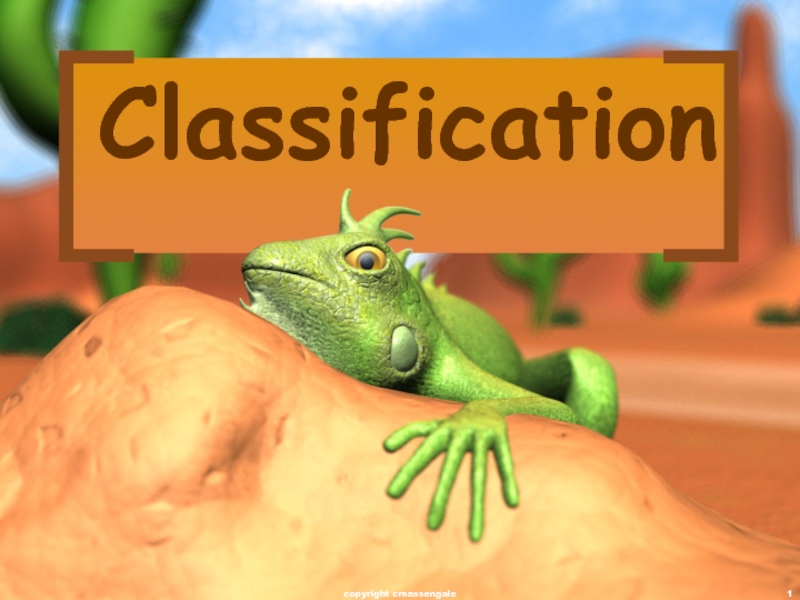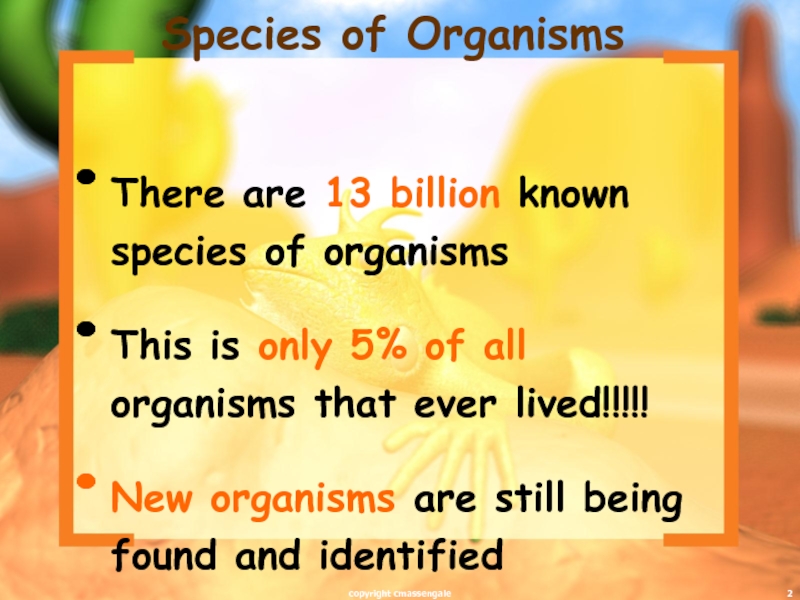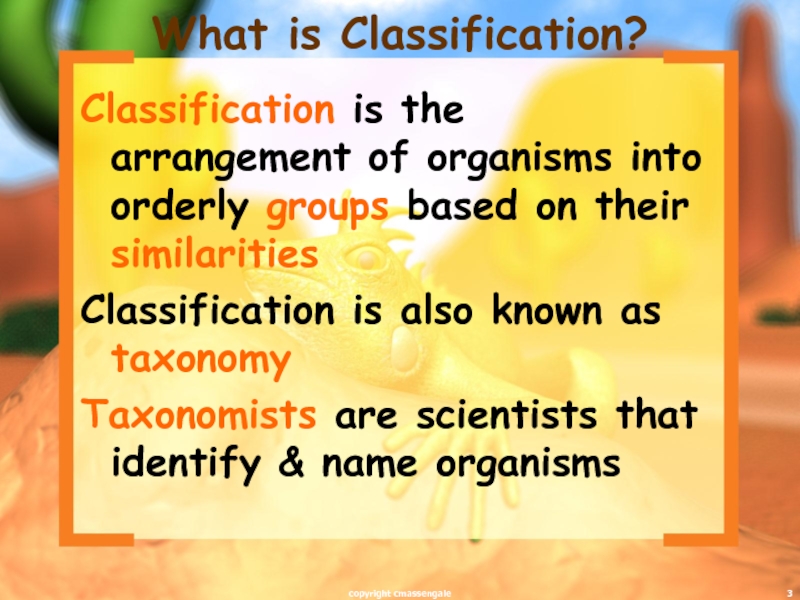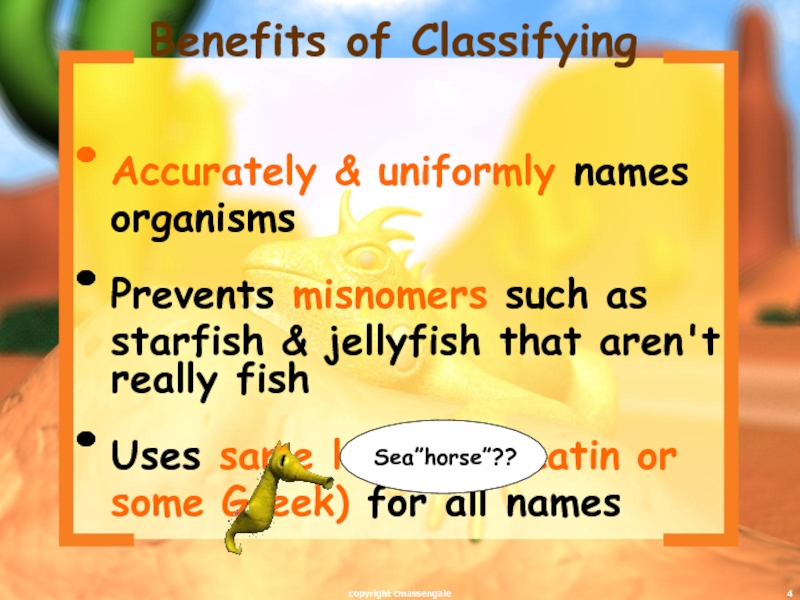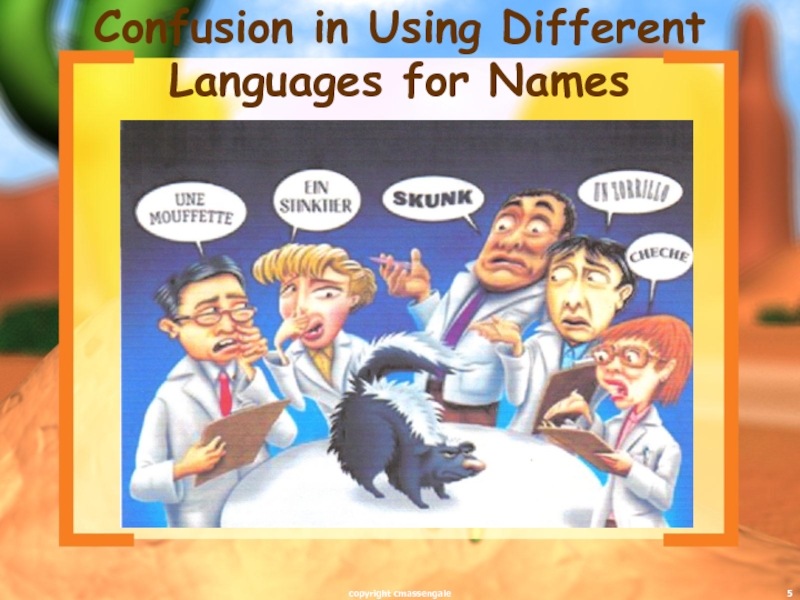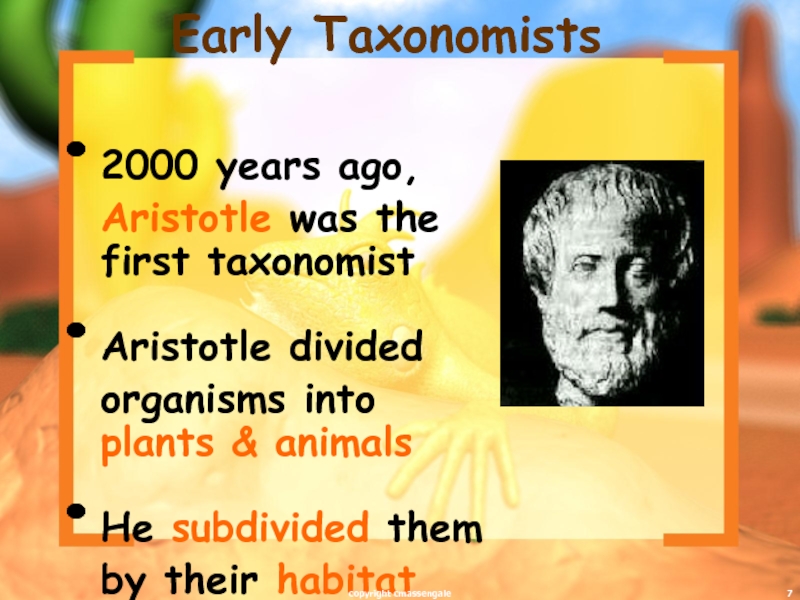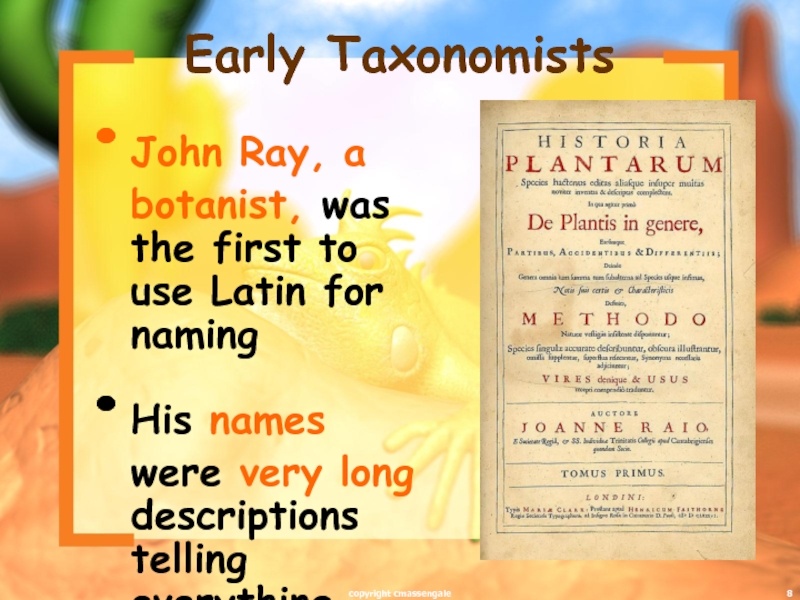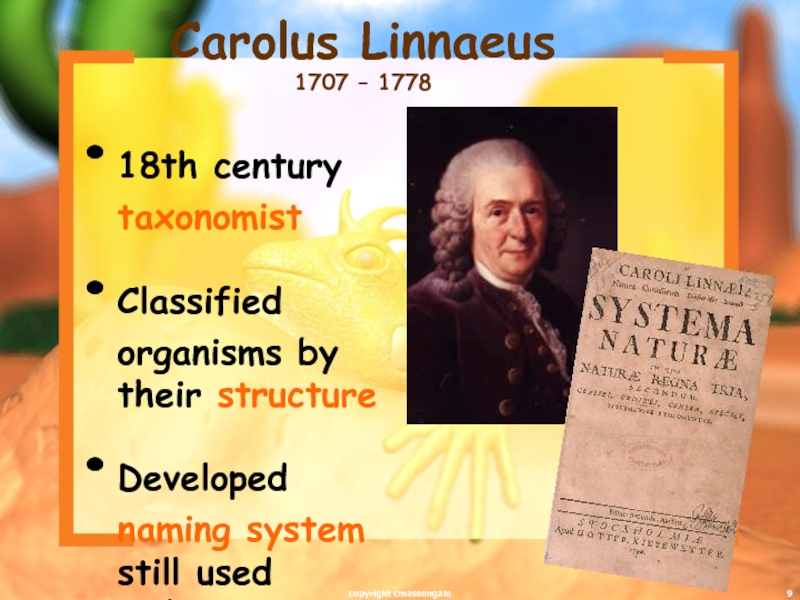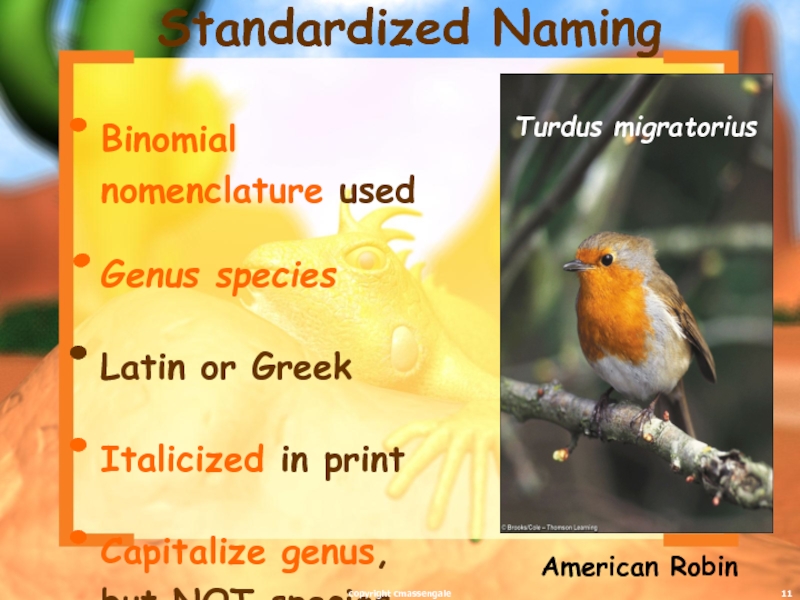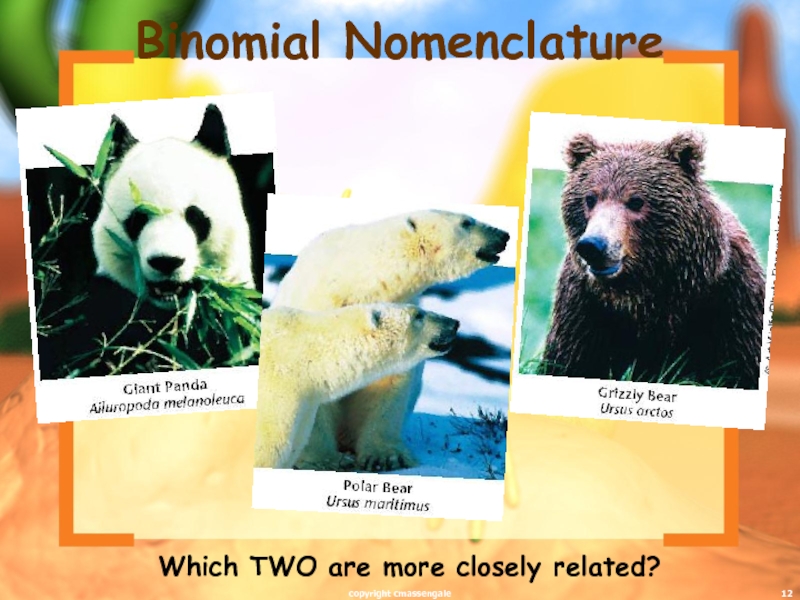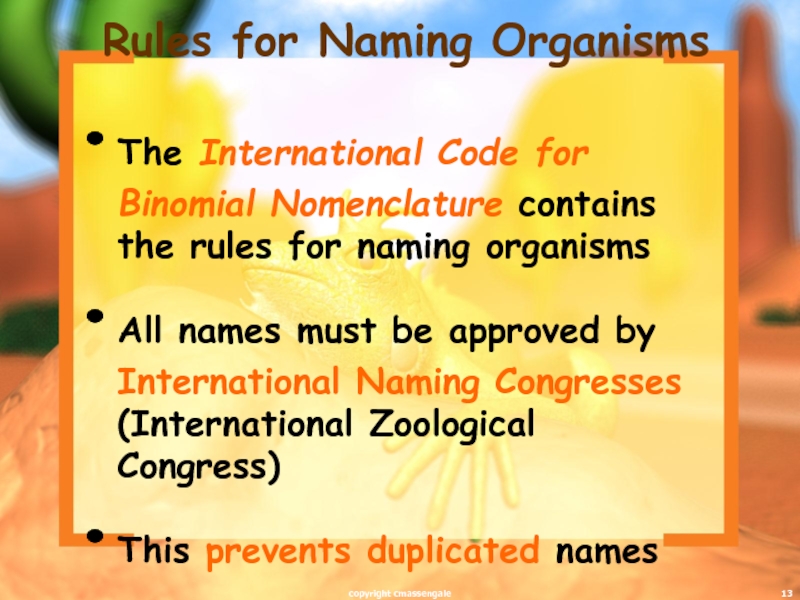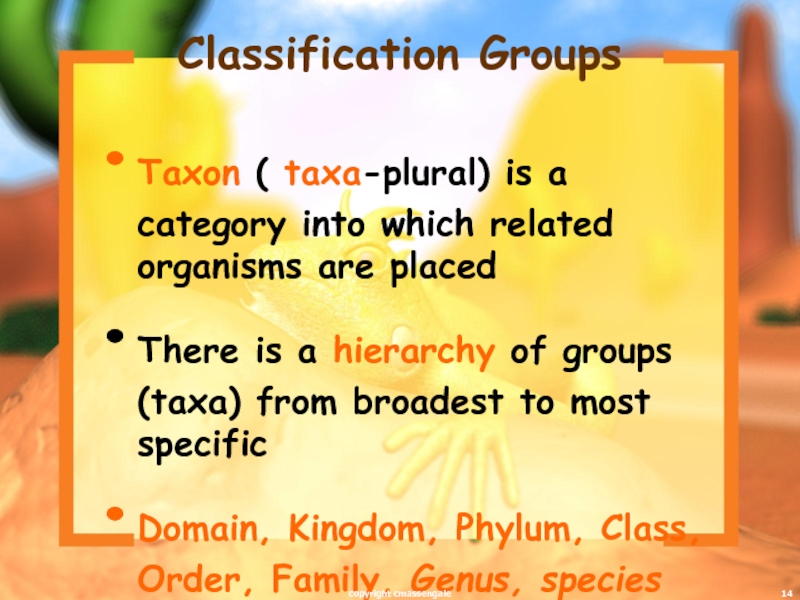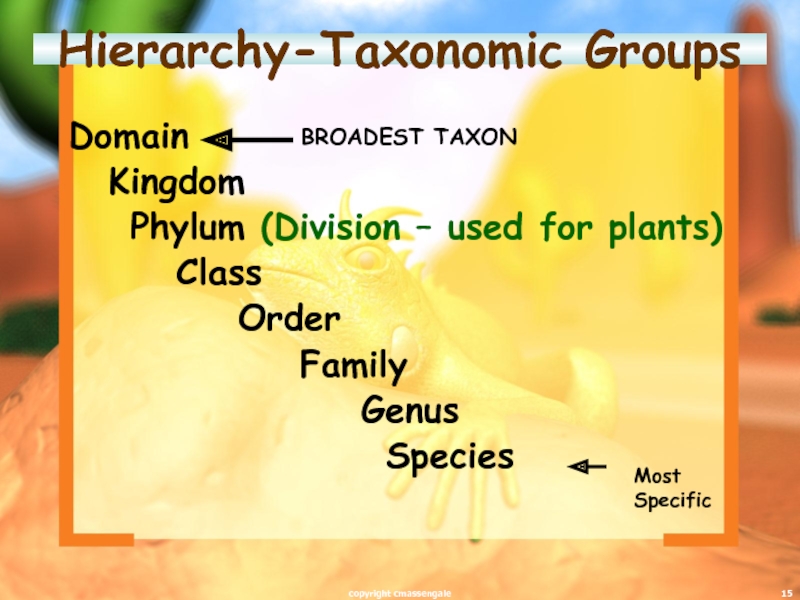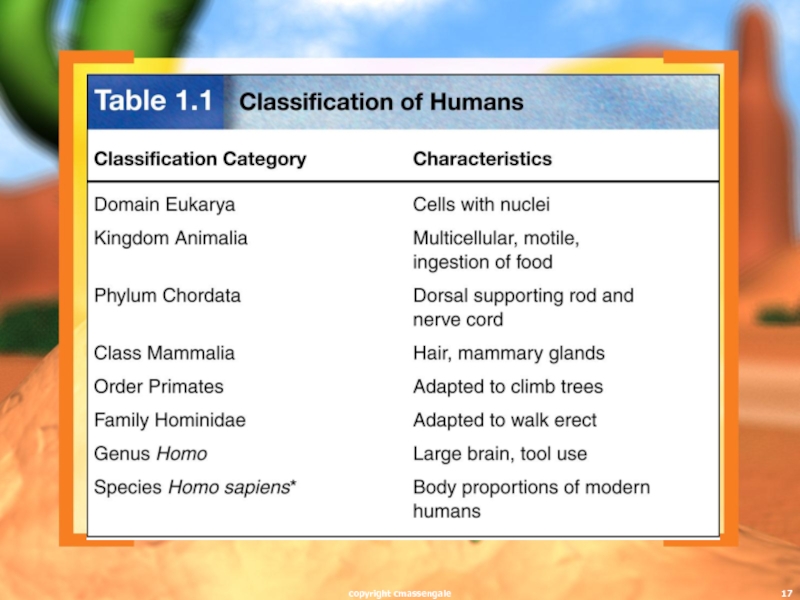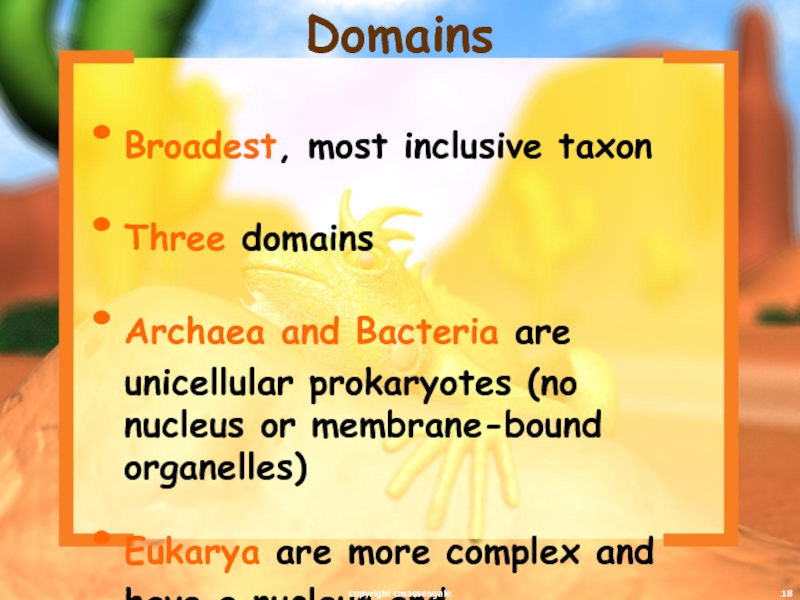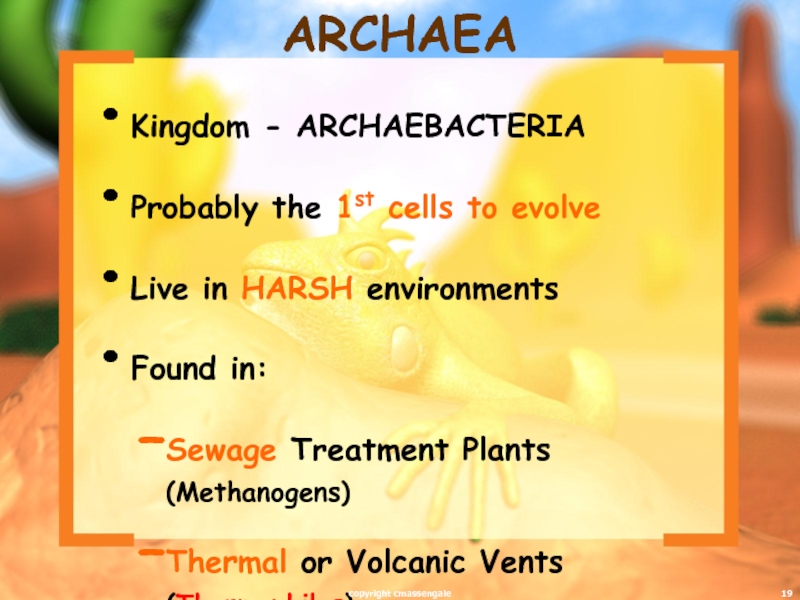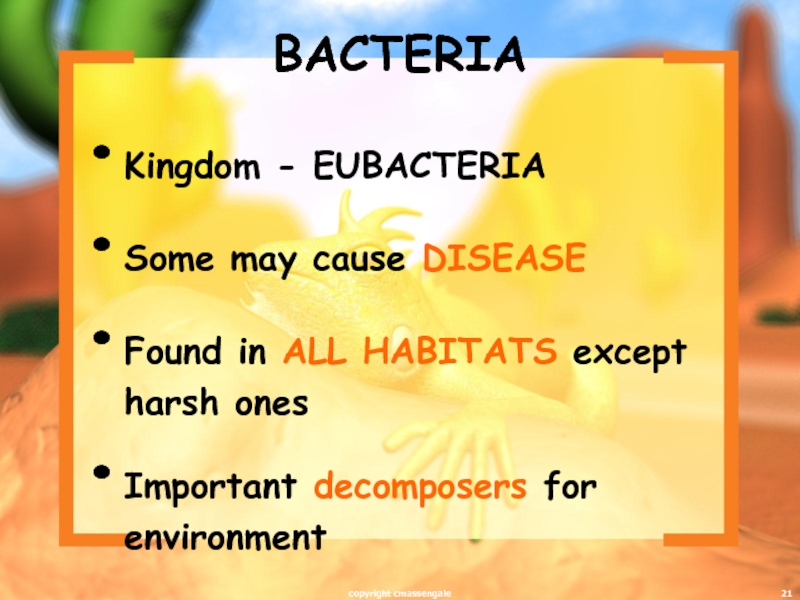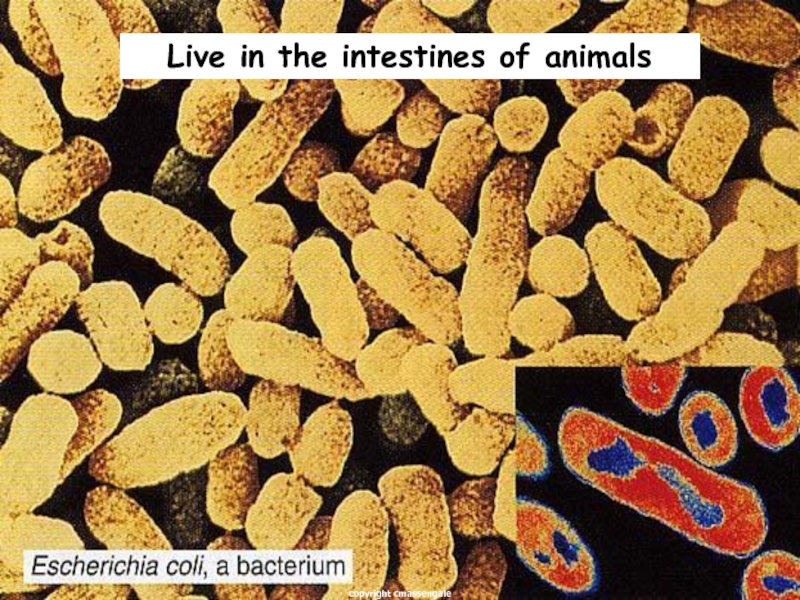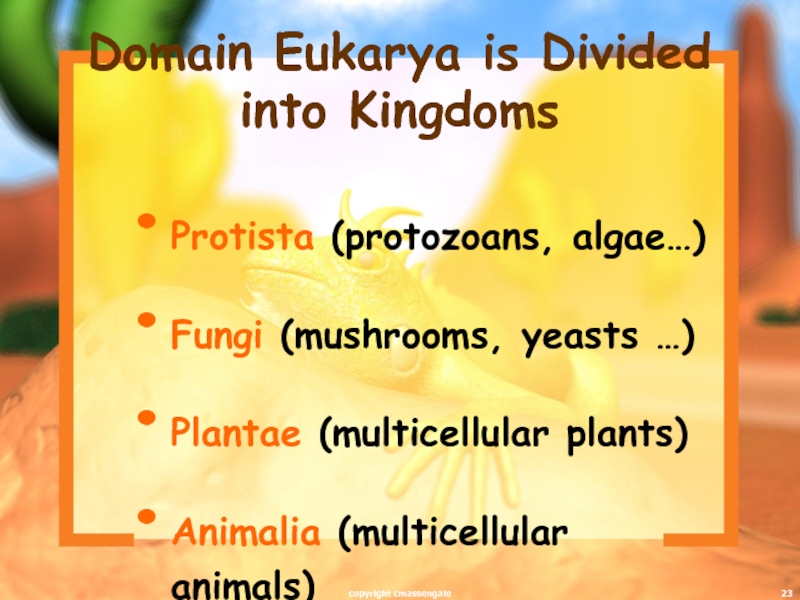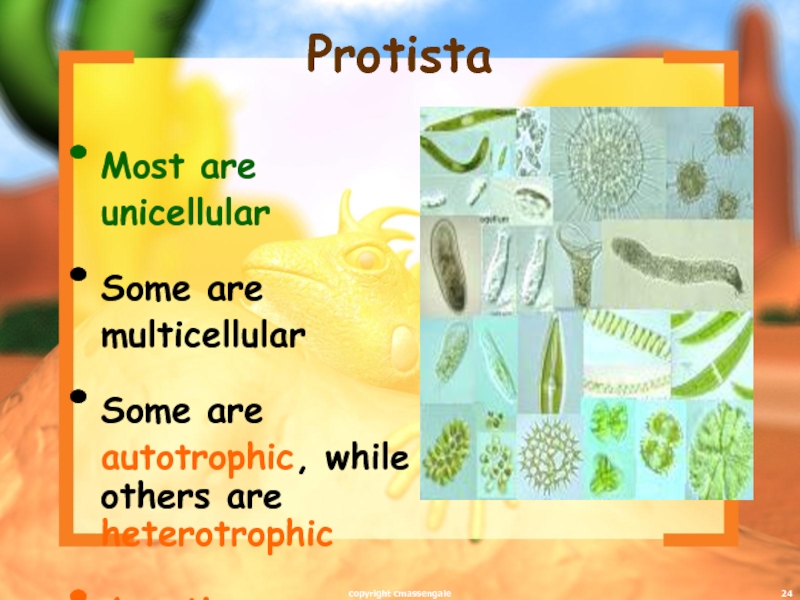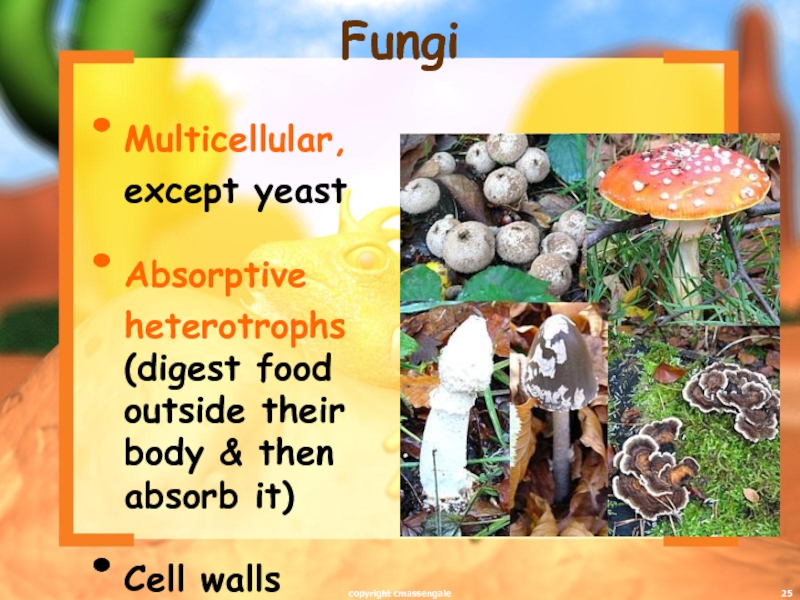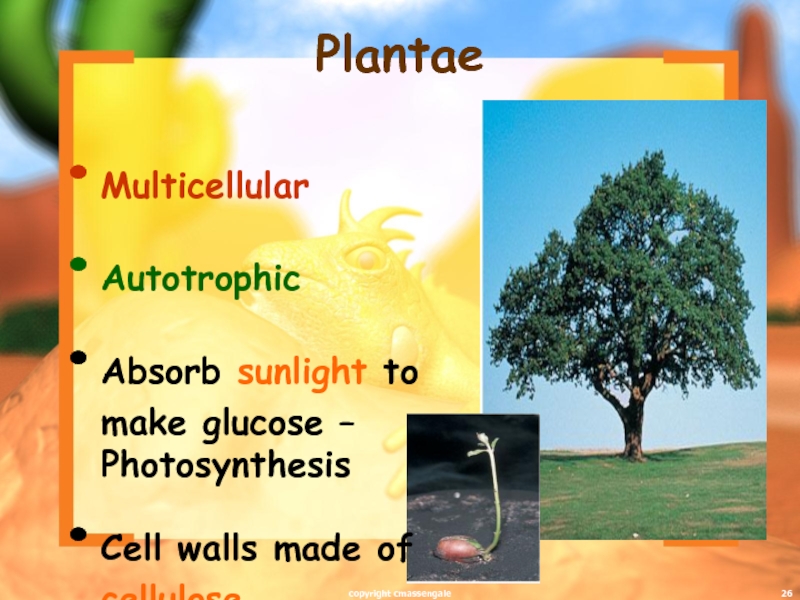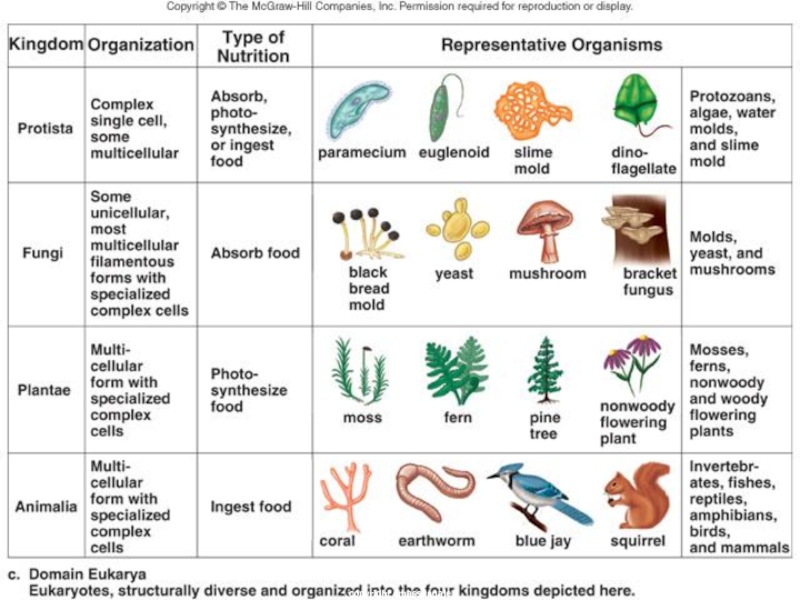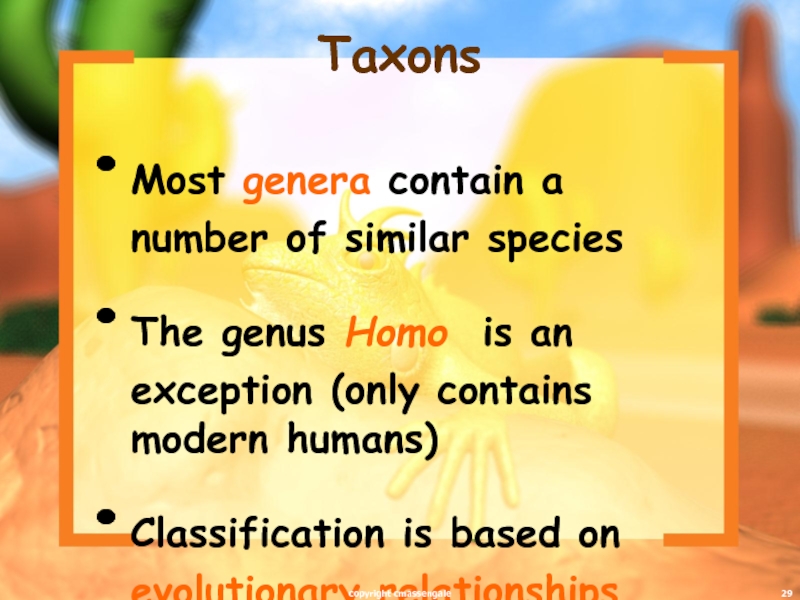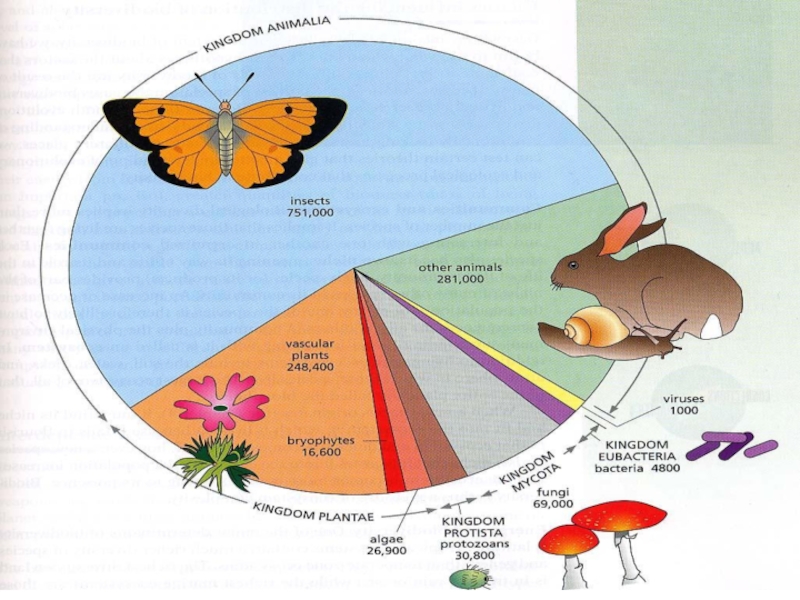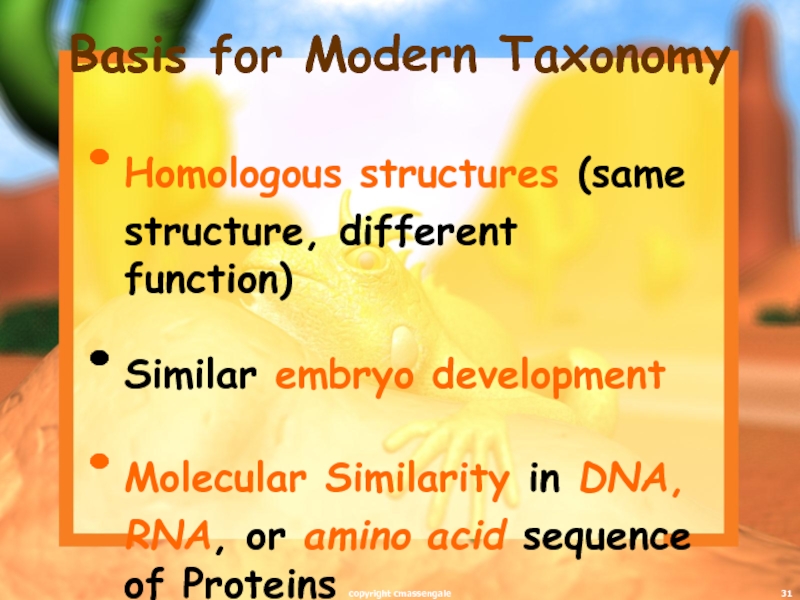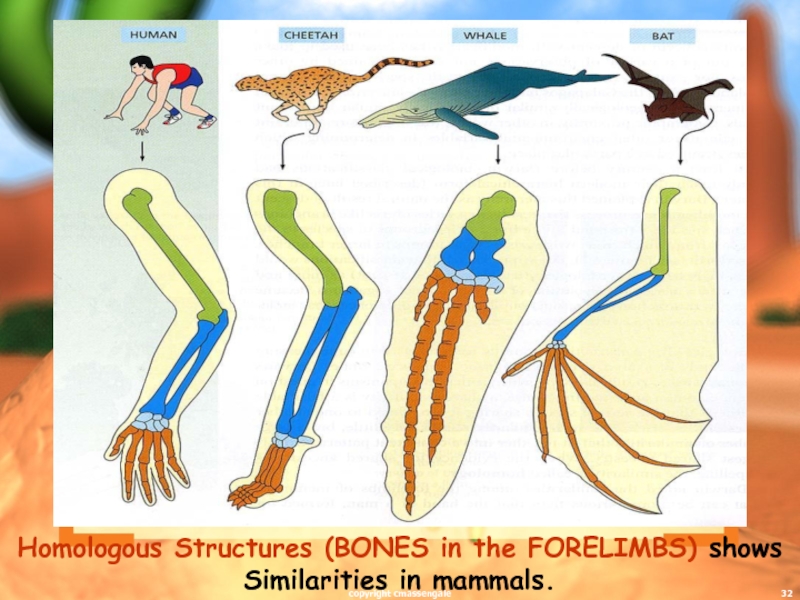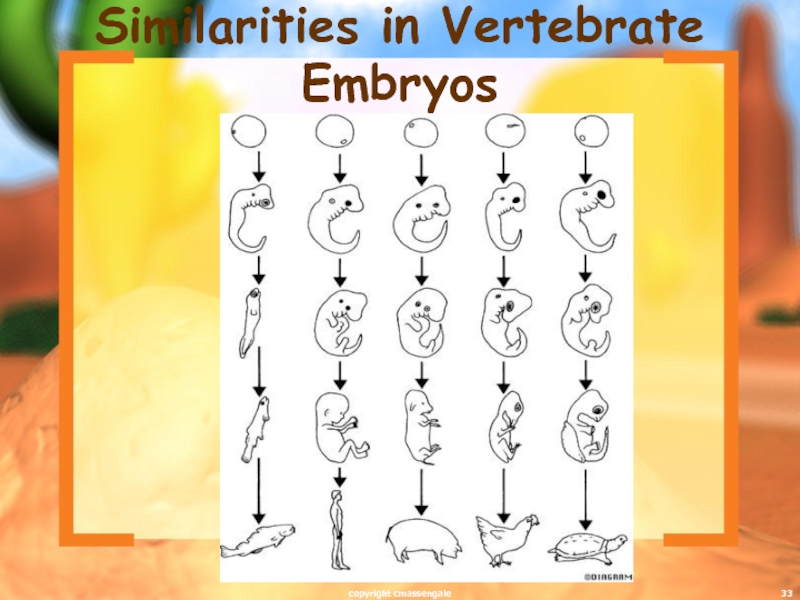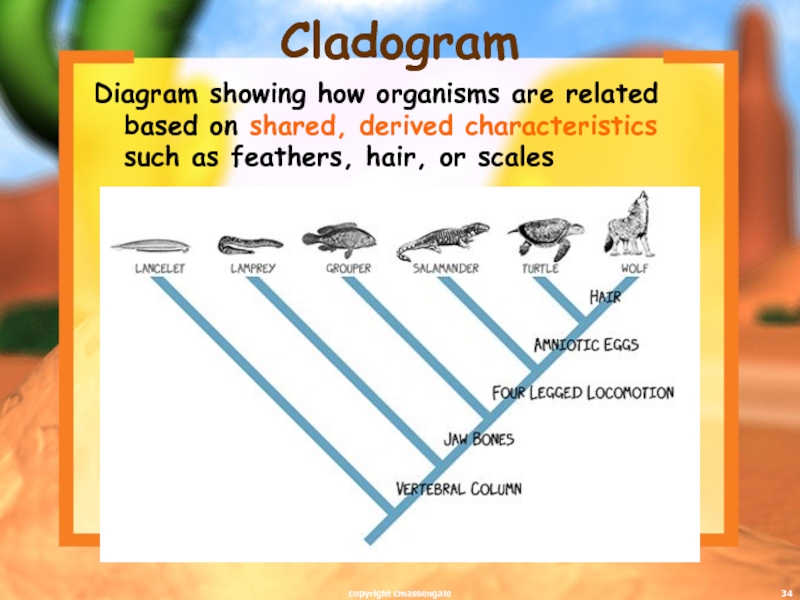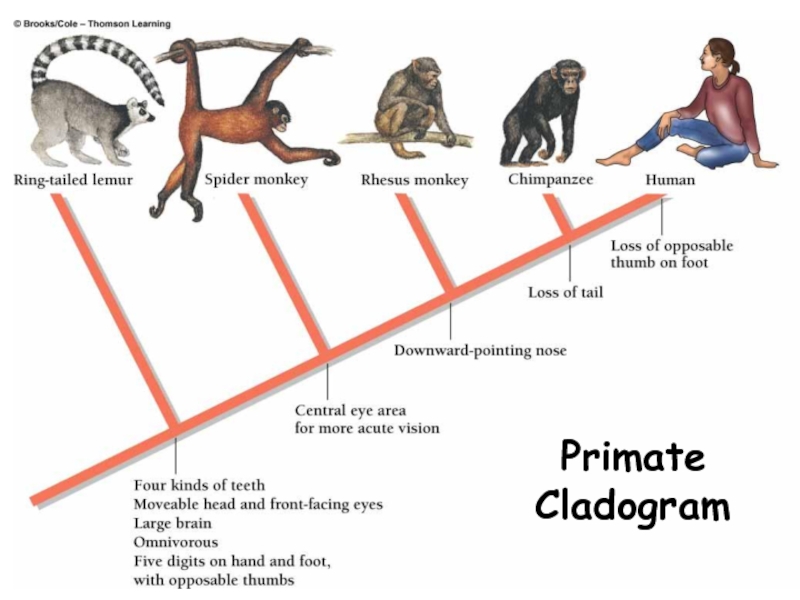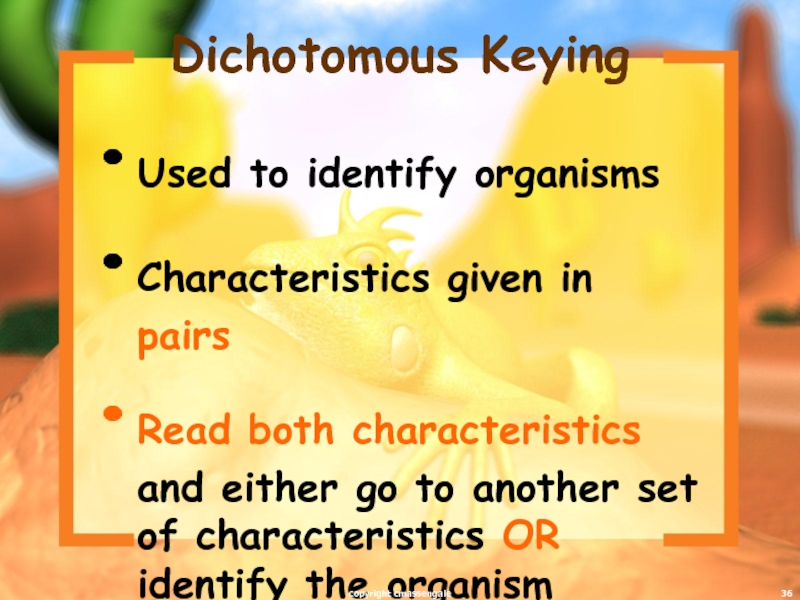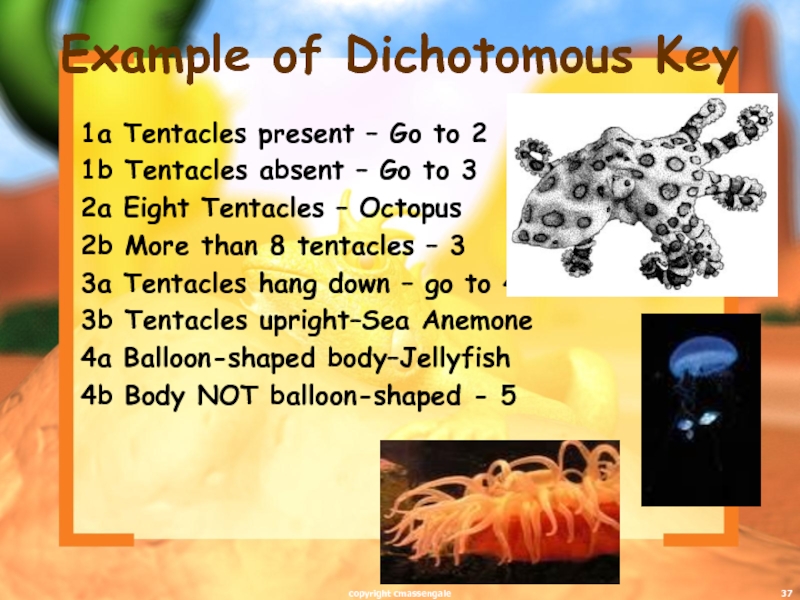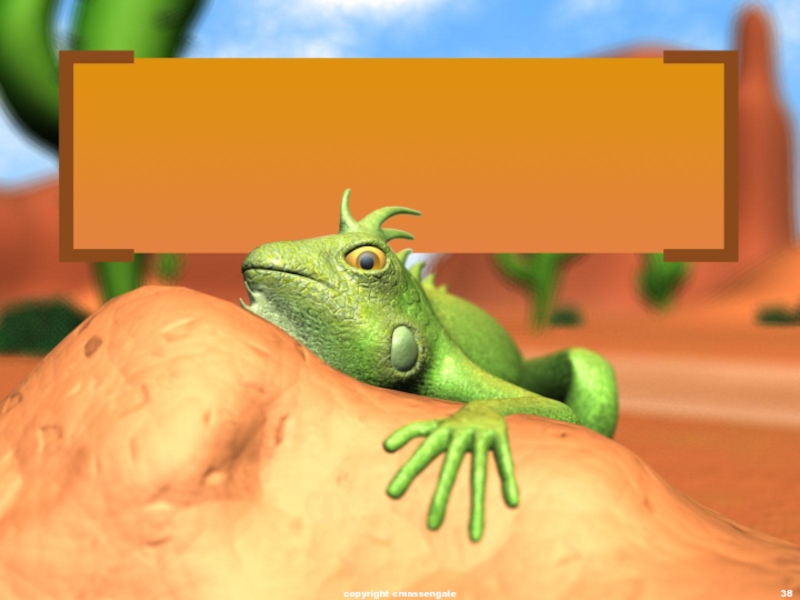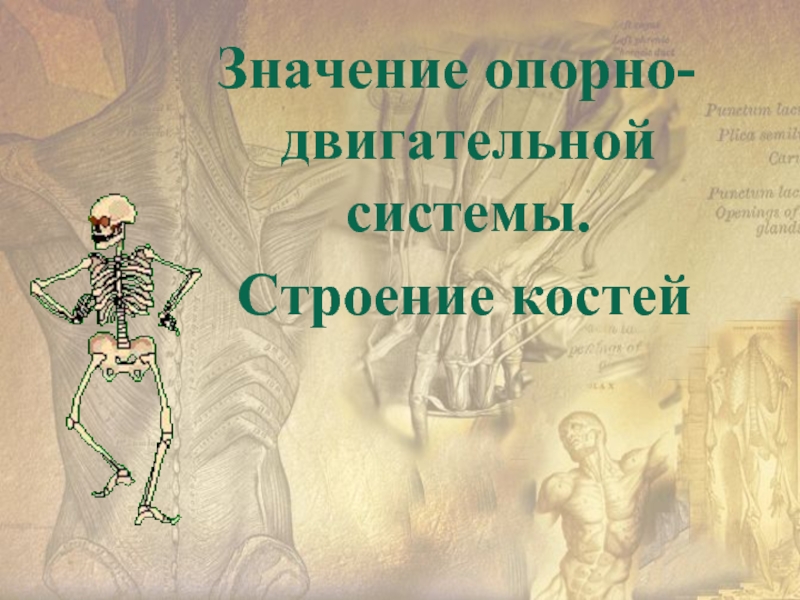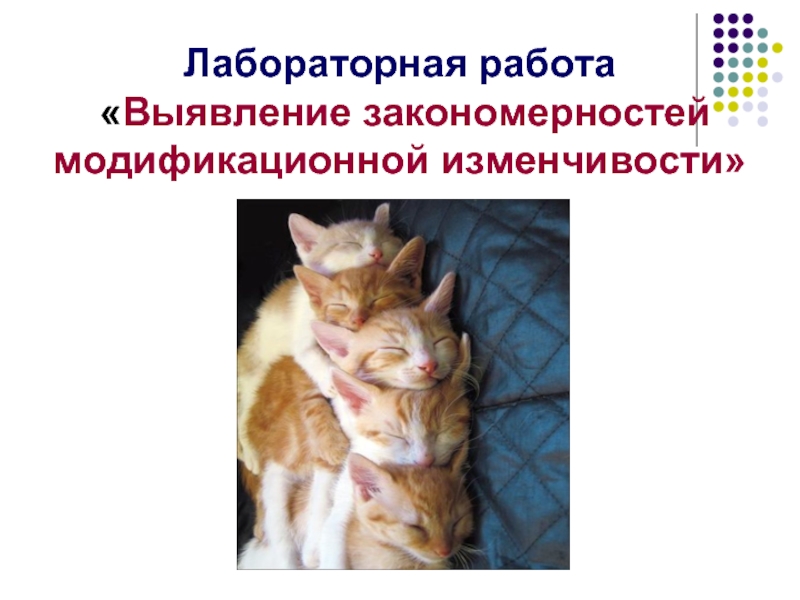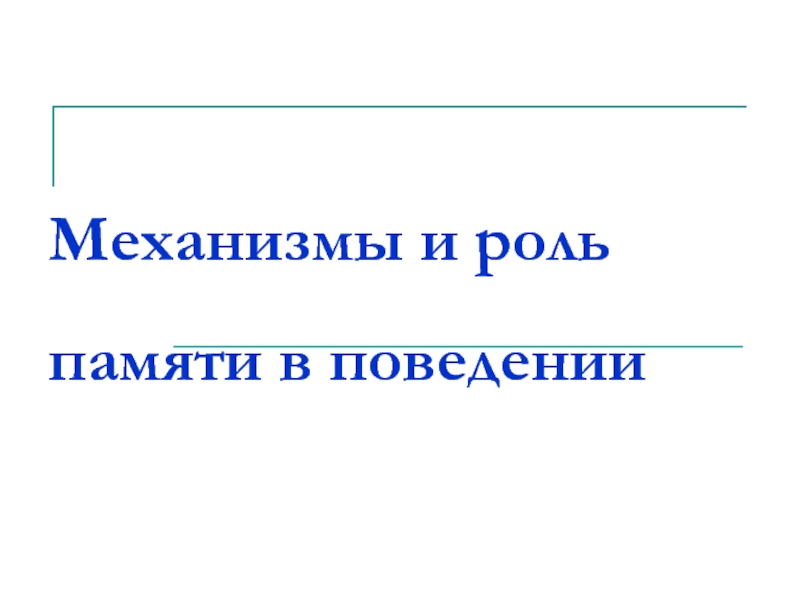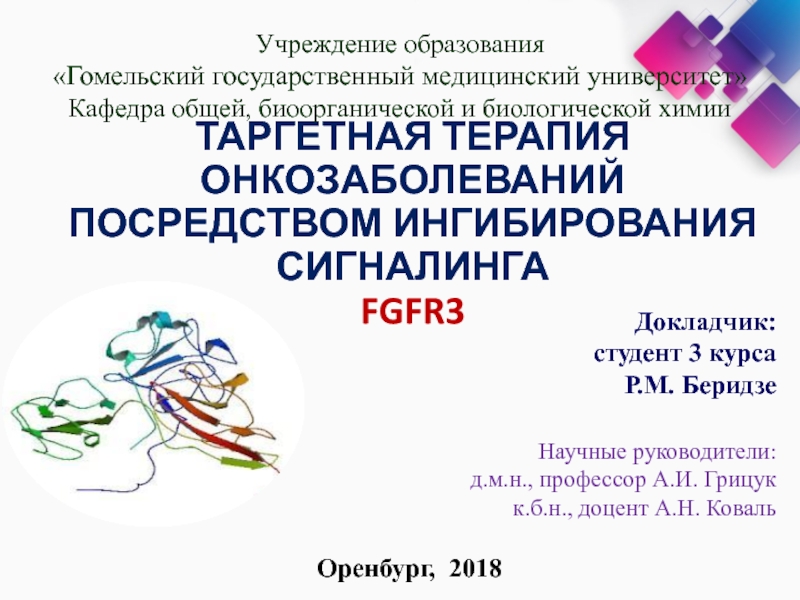- Главная
- Разное
- Дизайн
- Бизнес и предпринимательство
- Аналитика
- Образование
- Развлечения
- Красота и здоровье
- Финансы
- Государство
- Путешествия
- Спорт
- Недвижимость
- Армия
- Графика
- Культурология
- Еда и кулинария
- Лингвистика
- Английский язык
- Астрономия
- Алгебра
- Биология
- География
- Детские презентации
- Информатика
- История
- Литература
- Маркетинг
- Математика
- Медицина
- Менеджмент
- Музыка
- МХК
- Немецкий язык
- ОБЖ
- Обществознание
- Окружающий мир
- Педагогика
- Русский язык
- Технология
- Физика
- Философия
- Химия
- Шаблоны, картинки для презентаций
- Экология
- Экономика
- Юриспруденция
Classification of life. Species of organisms презентация
Содержание
- 1. Classification of life. Species of organisms
- 2. There are 13 billion known species of
- 3. What is Classification? Classification is the arrangement
- 4. Benefits of Classifying Accurately & uniformly names
- 5. Confusion in Using Different Languages for Names copyright cmassengale
- 6. Latin Names are Understood by all Taxonomists copyright cmassengale
- 7. Early Taxonomists 2000 years ago, Aristotle was
- 8. Early Taxonomists John Ray, a botanist, was
- 9. Carolus Linnaeus 1707 – 1778 18th century
- 10. Carolus Linnaeus Called the “Father of Taxonomy”
- 11. Standardized Naming Binomial nomenclature used Genus species
- 12. Binomial Nomenclature Which TWO are more closely related? copyright cmassengale
- 13. Rules for Naming Organisms The International Code
- 14. Classification Groups Taxon ( taxa-plural) is a
- 15. Hierarchy-Taxonomic Groups Domain Kingdom
- 16. Dumb King Phillip Came
- 17. copyright cmassengale
- 18. Broadest, most inclusive taxon Three domains Archaea
- 19. ARCHAEA Kingdom - ARCHAEBACTERIA Probably the 1st
- 20. ARCHAEAN copyright cmassengale
- 21. BACTERIA Kingdom - EUBACTERIA Some may cause
- 22. Live in the intestines of animals copyright cmassengale
- 23. Domain Eukarya is Divided into Kingdoms Protista
- 24. Protista Most are unicellular Some are multicellular
- 25. Fungi Multicellular, except yeast Absorptive heterotrophs (digest
- 26. Plantae Multicellular Autotrophic Absorb sunlight to
- 27. Animalia Multicellular Ingestive heterotrophs (consume food &
- 28. copyright cmassengale
- 29. Taxons Most genera contain a number of
- 30. copyright cmassengale
- 31. Basis for Modern Taxonomy Homologous structures (same
- 32. Homologous Structures (BONES in the FORELIMBS) shows Similarities in mammals. copyright cmassengale
- 33. Similarities in Vertebrate Embryos copyright cmassengale
- 34. Cladogram Diagram showing how organisms are related
- 35. Primate Cladogram copyright cmassengale
- 36. Dichotomous Keying Used to identify organisms Characteristics
- 37. Example of Dichotomous Key 1a Tentacles present
- 38. copyright cmassengale
Слайд 2There are 13 billion known species of organisms
This is only 5%
New organisms are still being found and identified
Species of Organisms
copyright cmassengale
Слайд 3What is Classification?
Classification is the arrangement of organisms into orderly groups
Classification is also known as taxonomy
Taxonomists are scientists that identify & name organisms
copyright cmassengale
Слайд 4Benefits of Classifying
Accurately & uniformly names organisms
Prevents misnomers such as
Uses same language (Latin or some Greek) for all names
Sea”horse”??
copyright cmassengale
Слайд 7Early Taxonomists
2000 years ago, Aristotle was the first taxonomist
Aristotle divided organisms
He subdivided them by their habitat ---land, sea, or air dwellers
copyright cmassengale
Слайд 8Early Taxonomists
John Ray, a botanist, was the first to use Latin
His names were very long descriptions telling everything about the plant
copyright cmassengale
Слайд 9Carolus Linnaeus
1707 – 1778
18th century taxonomist
Classified organisms by their structure
Developed naming
copyright cmassengale
Слайд 10Carolus Linnaeus
Called the “Father of Taxonomy”
Developed the modern system of naming
Two-word name (Genus & species)
copyright cmassengale
Слайд 11Standardized Naming
Binomial nomenclature used
Genus species
Latin or Greek
Italicized in print
Capitalize genus, but
Underline when writing
Turdus migratorius
American Robin
copyright cmassengale
Слайд 13Rules for Naming Organisms
The International Code for Binomial Nomenclature contains the
All names must be approved by International Naming Congresses (International Zoological Congress)
This prevents duplicated names
copyright cmassengale
Слайд 14Classification Groups
Taxon ( taxa-plural) is a category into which related organisms
There is a hierarchy of groups (taxa) from broadest to most specific
Domain, Kingdom, Phylum, Class, Order, Family, Genus, species
copyright cmassengale
Слайд 15Hierarchy-Taxonomic Groups
Domain
Kingdom
Phylum (Division – used for plants)
Order
Family
Genus
Species
BROADEST TAXON
Most Specific
copyright cmassengale
Слайд 18Broadest, most inclusive taxon
Three domains
Archaea and Bacteria are unicellular prokaryotes (no
Eukarya are more complex and have a nucleus and membrane-bound organelles
Domains
copyright cmassengale
Слайд 19ARCHAEA
Kingdom - ARCHAEBACTERIA
Probably the 1st cells to evolve
Live in HARSH environments
Found
Sewage Treatment Plants (Methanogens)
Thermal or Volcanic Vents (Thermophiles)
Hot Springs or Geysers that are acid
Very salty water (Dead Sea; Great Salt Lake) - Halophiles
copyright cmassengale
Слайд 21BACTERIA
Kingdom - EUBACTERIA
Some may cause DISEASE
Found in ALL HABITATS except harsh
Important decomposers for environment
Commercially important in making cottage cheese, yogurt, buttermilk, etc.
copyright cmassengale
Слайд 23Domain Eukarya is Divided into Kingdoms
Protista (protozoans, algae…)
Fungi (mushrooms, yeasts …)
Plantae
Animalia (multicellular animals)
copyright cmassengale
Слайд 24Protista
Most are unicellular
Some are multicellular
Some are autotrophic, while others are heterotrophic
Aquatic
copyright
Слайд 25Fungi
Multicellular, except yeast
Absorptive heterotrophs (digest food outside their body & then
Cell walls made of chitin
copyright cmassengale
Слайд 26
Plantae
Multicellular
Autotrophic
Absorb sunlight to make glucose – Photosynthesis
Cell walls made of cellulose
copyright
Слайд 27Animalia
Multicellular
Ingestive heterotrophs (consume food & digest it inside their bodies)
Feed on
copyright cmassengale
Слайд 29Taxons
Most genera contain a number of similar species
The genus Homo is
Classification is based on evolutionary relationships
copyright cmassengale
Слайд 31Basis for Modern Taxonomy
Homologous structures (same structure, different function)
Similar embryo development
Molecular
copyright cmassengale
Слайд 32Homologous Structures (BONES in the FORELIMBS) shows Similarities in mammals.
copyright cmassengale
Слайд 34Cladogram
Diagram showing how organisms are related based on shared, derived characteristics
copyright cmassengale
Слайд 36Dichotomous Keying
Used to identify organisms
Characteristics given in pairs
Read both characteristics and
copyright cmassengale
Слайд 37Example of Dichotomous Key
1a Tentacles present – Go to 2
1b Tentacles
2a Eight Tentacles – Octopus
2b More than 8 tentacles – 3
3a Tentacles hang down – go to 4
3b Tentacles upright–Sea Anemone
4a Balloon-shaped body–Jellyfish
4b Body NOT balloon-shaped - 5
copyright cmassengale
